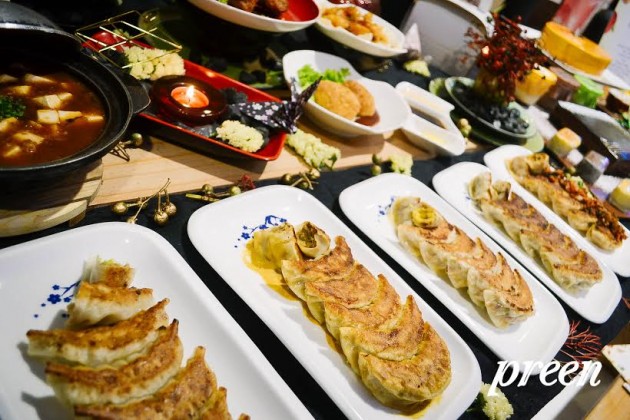Biting down on a warm gyoza sometimes does things to your senses you can’t explain. An interplay of different ingredients plus that sweet-salty gyoza sauce will encourage the next piece, without a doubt and get you going for that full bowl of ramen.
That small, savory treat has a little bit more than what we think there is, though. Linfred Yap, managing partner of Osaka Ohsho, a restaurant that specializes in gyoza and other Japanese dishes tells us about how it’s quite different from all the other dumplings out there.
#1 It’s a Chinese import
Go to any Japanese restaurant and you can find gyoza in the menu. It’s probably even the first item on the list. You’d be surprised to find out that it’s not actually an original Japanese dish. Linfred shares, “Gyoza is a Chinese import. It was brought by the Chinese people to the Japanese people and the latter made it their own.” In fact, the kanji spelling of gyoza uses the same characters that the Chinese use to spell out “dumpling.”
#2 Simple but not easy
A traditional gyoza is made of Japanese wrapping paper, pork, and cabbage. “It’s the basic stuffing that anyone can do,” says Linfred. The wrapping paper is also very uncomplicated. It’s only made of Japanese flour, water, and salt. There is no egg put in the mixture which makes it light and transparent and gives it that “melt in your mouth” quality. “But there are many ways you can personalize and specialize your gyoza,” says Linfred. “You can add your chosen ingredients like cheese and even kimchi.”
Whatever you choose to put in your gyoza, you’ve got to wrap it correctly. “There are at least 20 folds involved in wrapping one gyoza. There is an art to it that not a lot can replicate and it takes time to learn,” Linfred tells us. The specialized fold is what ensures the mixture to be enclosed properly through the cooking process and as it is being served.
#3 Two-way cooking
Another very important trait of a good gyoza is how it’s cooked. It’s not just steamed or deep-fried as other variations would do. “What’s unique about the gyoza is that it’s half grilled and half steamed. One side is grilled first then it is turned over to be steamed until the stuffing is fully-cooked. [You then] get a soft texture on one side and the crunchy one on the other side,” explains Linfred. This gives the gyoza that unique bite and that makes the pork tastier as the two ways it has been cooked come into play.
#4 Always freshly-made
A good gyoza is always made right before you cook it. “Freezing it or keeping it in the chiller for long periods of time would make the wrapping lose their tenderness while the pork wouldn’t be as tasty,” says Linfred. Although at the restaurant, Linfred says that they do make gyoza by the batch, they control the amount so no piece is left in the chiller too long. “Ideally, we make a batch in the morning for the orders until lunch and then another batch that will sustain until the dinner crowd comes by.”
Linfred then tells us that store-bought versions and frozen iterations of gyoza available at supermarkets automatically have extenders and other ingredients that give them longer shelf life but compromise their taste. “You’ll be able to tell by the taste and how the wrapping is too thick that you’re not getting the real gyoza experience.”
Osaka Ohsho. G/F, The Block, SM North EDSA, EDSA cor. West Avenue, Quezon City. +63 977 824 1589. Open from 10 a.m to 10 p.m. For more information, visit their Facebook page.
Photo by Acushla Obusan












































